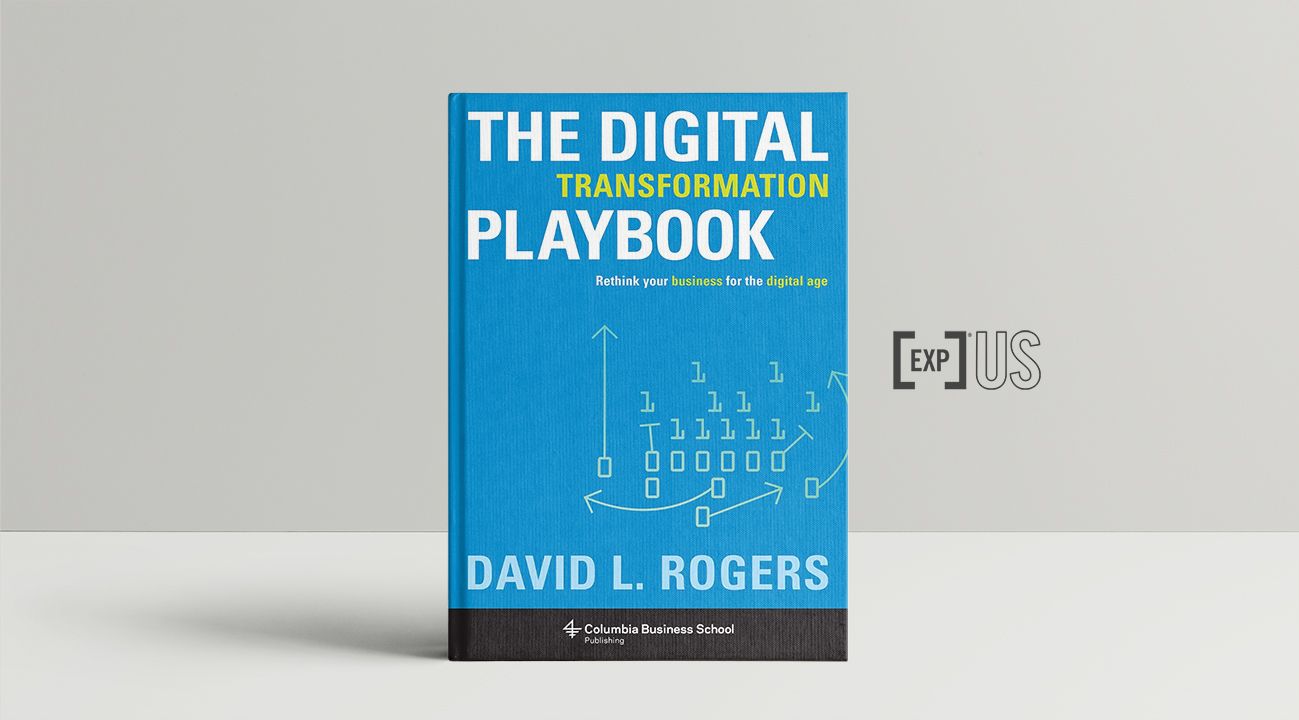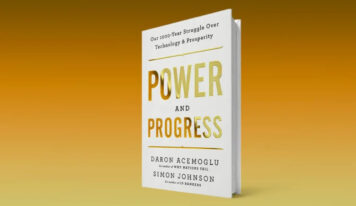Rethinking your business for the digital age
Core Ideas:
1 – Maersk, a shipping company, started participating in conversations and sharing videos and photos of its ships, using social platforms like Facebook, LinkedIn, and others. Benefits: new recruitment and selection networks, new sales leads, and more satisfaction among customers and employees.
2 – To be a platform, the business model must serve two or more distinct sides of customers. These can be, for example, buyers and sellers; software developers and consumers; merchants, cardholders, and banks.
3 – Big data is not exclusive to world-class companies. Any company can access high-quality analytical tools provided by cloud service providers such as SAP and IBM at affordable prices.
4 – As in Silicon Valley’s lean startups, rapid experimentation focuses on developing prototypes of minimal viability – before, during, and even after launch. Every innovation should preferably be launched as a beta version, with continuous improvements.
5 – Today, the need for value is intertwined with the imperative of learning and constantly reinventing what value the customer wants. The purpose of the company can be reshaped, with the continuous creation of new value for the customer.
About the author:
David L. Rogers is director of Columbia Business School’s executive programs in Digital Business Strategy and Digital Marketing. He has served as a digital strategy consultant to companies such as Google, GE, Toyota, Visa, and others.
Foreword
In this book, I explore the phenomenon of digital transformation: what distinguishes companies that manage to adapt and progress in the digital world compared to those that fail? For nine years, as a founder of the BRITE Conference, I have been bringing together chief executives from global brands, technology companies, media companies, and fast-growing startups to discuss the evolving landscape of digital business.
From there emerged a central idea that has shaped the development of this entire book: digital transformation is not about technology – it’s about strategy and new ways of thinking. Transforming to the digital age requires the business to update its strategic mindset, much more than its IT infrastructure. This truth is evident in the changing roles of the technology leader in enterprises. The traditional role of the chief information executive was to use technology to optimize processes, to reduce risk, and to improve the management of existing businesses. The emerging role of the chief digital activities executive is much more strategic, focused on using technology to reimagine and reinvent the core business itself.
Chapter 1 – The five domains of digital transformation: customers, competition, data, innovation, value
Britannica concluded that customer behavior was undergoing dramatic transformations with the adoption of new technologies. Instead of trying to defend the old business model, the company’s leaders sought to understand the needs of its core customers – home users and educational institutions, primarily at the elementary and high school level, through university. Britannica experimented with different delivery vehicles, pricing policies, and sales channels for its products, but remained focused on its core mission: quality publishing and educational services. In this way, it was able not only to move the encyclopedia to a pure online subscription model but also to develop new related product offerings to meet the evolving needs of curricula and classroom learning.
Digital technologies have changed the way we connect with customers and deliver value to them. Many of us grew up in a world where companies delivered messages and provided products to customers. Today, however, the feedback is much more interactive, and two-way. Customer messages and customer reviews make them far more influential than advertising and celebrity, making dynamic customer participation a critical driver of a company’s success.
Perhaps digital technologies have changed our world even more by the way we now consider data. In traditional business, data was expensive to obtain, difficult to store and used across organizational departments. Managing this data required the purchase and maintenance of large IT systems (think of the huge Enterprise Resource Planning [ERP] systems needed just to track the path from a factory in Thailand to a shopping mall in New York). Today, data is generated in unprecedented quantities, not only by companies and organizations but by ordinary people, all the time and everywhere. In addition, data storage in the cloud is becoming increasingly cheap, accessible, and user-friendly. The biggest challenge today is to convert a huge amount of data into valuable information.
Chapter 2 – Explore customer (client) networks
Customers in the digital age are not passive consumers; they are like nodes or dots in dynamic networks, interacting and building brands, markets, and each other. Companies need to become aware of this new reality and treat customers accordingly. They must also understand how customer networks are redefining the market funnel, reshaping customers’ paths to purchase, and opening up new ways to co-create value by engaging businesses and customers.
The connection strategy for businesses is to become part of customer conversations. With Facebook, which has passed the 1.5 billion active user mark, and other huge platforms such as Sina Weibo, Twitter, and LinkedIn, social media has become the global standard for how customers communicate with each other. These social media are also increasingly where customers expect to communicate with companies of all kinds.
The connection strategy can follow several methods, such as social listening, social customer services, participating in conversations, soliciting ideas and content, and hosting a community.
Participating in the conversations
Maersk Line, a container shipping company with 25,000 employees, decided to test whether social media could help its business communications. On a trial basis, the company began participating in conversations and sharing videos and photos of its ships around the world, using platforms as diverse as Facebook, Instagram, LinkedIn, YouTube, Sina Weibo, and Pinterest. In one year, the project helped overcome a public relations crisis involving a whale; reveal a historic video from the company’s archives; and build a large and engaged group of followers composed of customers, suppliers, shipping experts, and employees. More tangible benefits for Maersk included new networks for recruitment and selection, new sales leads, and more satisfaction among customers and employees.
Chapter 3 – Build platforms, not just products (competition)
The digital revolution is redefining competition and relationships between companies in many ways. It is turbocharging business growth for platforms like Airbnb. For companies like HBO, it is disintermediating and reshaping channel and partner relationships. More broadly, it is shifting the locus of competition: competition is now taking place less within industries and between similar companies seeking to replace each other. Instead, competition today is cutting across sectors and involving partners who rely on each other to achieve success. Finally, digital technology is increasing the importance of competition, with companies that compete directly in some arenas also acting as partners in others.
The most accurate and illuminating description of what constitutes a platform is the product of the work of Andrei Hagiu and Julian Wright. To summarize, I propose the following definition:
A platform is a business that creates value by facilitating direct interactions of two or more different types of customers.
Three key points from Hagiu and Wright, which I include in this definition, are worth highlighting:
Different types of customers: to be a platform, the business model must serve two or more distinct sides, or types, of customers. (These can be buyers and sellers; software developers and consumers; merchants, cardholders and banks, etc.). The need for distinct sides explains why a pure communications network (such as Skype, fax, or telephone) is not a platform: although it connects customers to each other, the customers are all of the same types. The unique dynamic of platforms stems from the fact that they bring together different parties, who play different roles and provide and receive different kinds of value.
Direct interactions: platforms must enable these two or more sides to interact directly – that is, with some degree of independence. On a platform, such as Airbnb or eBay, the two parties are free to create their own profiles, set and negotiate prices, and decide how they want to present their services or products. This is a critical distinction between a platform and a reseller or sales channel.
Facilitation: even if they are not dictated by the platform business, interactions must occur through it and be facilitated by it. This is why our definition of a platform does not include a franchise business, such as McDonald’s or H&R Block, which offers brand licensing, training, and support services to individual owners who open branches.
Chapter 4 – Convert data into assets (data)
The third domain of the digital transformation guide is data. The growth of business in the digital age requires changing some fundamental assumptions about the meaning and importance of data. In the past, although data played an important role in every business, it was used to evaluate and manage business processes and to help with forecasting and long-term planning. Data was expensive to produce through surveys, research, and structured measurement.
Today, the functions and possibilities of data are seemingly limitless. Data generation is often the easiest part, with large amounts being continuously created by sources outside the company. The biggest challenge is the exploration and conversion of this data into useful insights. Traditional spreadsheet-based analysis has been replaced by big data, where unstructured information is processed by powerful new computing tools.
What, then, is new about big data, besides the rapidly growing “bigness”?
The big data phenomenon is best understood in terms of two interrelated trends: the rapid growth of new types of unstructured data, and the accelerating advance of new capabilities for managing and understanding this kind of data for the first time. The impact of these trends is topped by a third trend: the rise of cloud computing infrastructure, which makes the potential of big data increasingly accessible to more and more companies.
Increasingly, greater amounts of computing applications and services are delivered seamlessly over the Internet, as the real processing power sits in the cloud, not on our devices and computers. Amazon Web Services, Amazon’s huge B2B (business to business) computing services division, plus Microsoft, Google, and others, are all driving the shift in computing to an environment where businesses increasingly meet their needs through subscription and SaaS (software as a service) offerings, rather than buying and installing the most powerful computers on their own premises.
Cloud computing has profound implications for scalability and small business. Services like Watson are available to businesses, just as cloud storage and customer databases are available to small businesses. This means that big data is not exclusive to world-class companies with huge IT departments. Any company can access high-quality analytical tools – provided by cloud service providers such as SAP and IBM – paying only for the data and processing. Big data doesn’t cost anything.
Chapter 5 – Innovate by rapid experimentation (innovation)
The fourth domain of digital transformation is innovation – the process by which companies develop, test, and launch new ideas into the market. Traditionally, innovation-focused solely on the finished product. Testing ideas was relatively difficult and expensive, which is why decisions and preliminary ideas were based on analysis, intuition, and the ascendancy of the managers participating in the project. Effective market feedback tended to come very late in the process (sometimes after the public launch). Under these conditions, avoiding market failure was the predominant concern.
In the digital age, companies need to innovate radically differently through rapid experimentation and continuous learning. Instead of focusing on the finished product, this approach focuses on identifying the right problem and then developing, testing, and learning, involving multiple possible solutions. Like Silicon Valley’s lean startups, it focuses on developing and repeatedly repeating prototypes of minimal viability – before, during, and even after launch. At every stage, assumptions are tested and decisions are made based on customer validation and market responses. The leader is the one who knows how to ask the right questions, not the one who claims to have the right answers.
This shift to a more interactive, learning-based model has been going on for several years, in many areas. It is at the heart of Steve Blank’s customer validation model and Eric Ries’ work on lean startup methods. It is an integral part of the design thinking model that product development companies such as IDEO have used with clients such as Apple, Jet-Blue, Target, Disney, Intel, and SAP. With the advent of A/B testing, constant experimentation has become standard for more and more products, services, and communication channels. Today, it is fashionable to assume the attitudes of a Silicon Valley startup and state that a product is never finished and that every innovation should be launched as a beta version, susceptible to continuous improvement.
Celebrating smart failure means creating occasions for senior leaders to recognize innovative projects that have failed, along with those that have achieved success. (Celebrating them on the same occasion ensures that participants see the connection between the two categories.) When celebrating innovation failures, it is important that senior management clarify not only why employees may fail (i.e., early and cheap). By celebrating the virtues of smart failure (i.e., learning from mistakes, applying them to strategy, and sharing the learning), leaders can infuse them into the organization. This approach is taken by India’s Tata Group. Every year, the global conglomerate celebrates innovations from its 100 operating companies around the world. In addition to categories such as Product Innovations and Core Process Innovations, teams are encouraged to compete in categories such as Dare to Try-an award that “recognizes and rewards the most novel, courageous, and seriously pursued ideas that have not achieved the desired results.”
Chapter 6 – Adapt your value proposition (value)
The fifth and final domain of digital transformation is business value. Traditionally, a company’s value proposition has been considered fairly constant as far as possible as a source of sustainable long-term competitive advantage. Successful companies would find a differentiated offering, use it to position themselves in the market, and then do their best to optimize the business model for as long as possible. In the digital age, however, the inflexible focus on executing and delivering the same value proposition is no longer enough.
All companies today must follow the example of realtors. Instead of defining what they do based on what their industry did in the past, they must define their products and services based on the ever-changing needs of their customers. To do this, they need to evaluate each new technology not by how it impacts their current business model, but by how it creates their next business model. They need to constantly examine the core value of their business offerings to customers and ask: What does my company exist for? What needs does it meet? Are they still relevant? What is my business really about?
The Value Proposition Map is a tool that any organization can use to assess and adapt its value proposition to customers. It serves to identify new emerging threats, as well as new opportunities to create value for the same customers.
The Value Proposition Map follows a six-step process that maps out new options for the company:
Step 1: Identify key customer types;
Step 2: Define the current value for each customer;
Step 3: Identify emerging threats;
Step 4: Assess the strengths of current value elements;
Step 5: Generate potential new value elements;
Step 6: The last step of the Value Proposition Map is to synthesize everything you have learned about your value proposition for each type of customer.
Review the value elements and place each of them in one of four columns:
Core elements – to develop: these elements are a source of strength to adopt as a focus for continuous innovation.
Weakened elements to sustain: These are current value elements that are losing impact for customers and should be strengthened and improved.
Disrupted elements – to de-emphasize: These are old sources of value that have lost their ability to meet customer needs, and which should be phased out and removed from the strategic focus.
New elements – to create: these are new value elements that you have identified as opportunities to add value for customers and that you should invest in to drive future growth.
Chapter 7 – Master disruptive business models
The idea of disruption has gained relevance as all industries face increasingly intense and unpredictable threats of disruption. At the same time, however, disruption has become a fad, mentioned left and right, indiscriminately. Any new business or product is extolled as disruptive, to lend it credibility (“You need to finance our new startup; it will disrupt industry XYZ!”). Sometimes the rhetoric seems to lose sight of the goal of innovation, which is not simply to disrupt traditional businesses but to create new value for customers.
To ground our own business strategy by thinking constructively about disruption, a clear understanding of the phenomenon is essential.
To begin, I propose a definition:
Business disruption occurs when an established industry faces a challenger that provides much more value to customers through offerings that traditional companies cannot directly compete with.
The theory of business model disruption is simply this: To disrupt a traditional business, the challenger must possess a significant differentiator on either side of the business model:
A difference in the value proposition dramatically displaces the value provided by the conventional incumbent (at least for some customers).
A difference in the value network that erects a barrier capable of preventing imitation by the conventional incumbent.
Business disruption occurs when the disruptor meets these two conditions – and only then.
Without the first differentiator, there is no disruption, only traditional competition. If the challenger’s offering is only incrementally better (price, availability, simplicity, only slightly better attributes), some customer migration may even occur, but the incumbent may react with normal competitive tactics to catch up with the challenger, close the gap, and minimize losses.
Without the second differentiator, however, the incumbent would simply not be able to take on the success of the new innovative challenger and imitate it profitably with its own offering. The conventional incumbent that suffers disruption is unable to imitate the challenger for several reasons, but all stem from the value network that the conventional incumbent developed while building its business.
Conclusion
Organizations will be guided, as they develop their strategies and business models, by a focus on continuity of value creation. Evoking Peter Drucker, management thinkers argue that the true and ultimate purpose of every company should always be to create value for customers: to “create a customer,” as Drucker wrote, or to “win and keep a customer,” as Ted Levitt put it. Today, however, this doctrine may need a little updating. Amidst constant digital change, no business can progress for long by offering the same value proposition to customers. Today, the need for value creation is intertwined with the imperative to learn and constantly reinvent what value the customer wants. The purpose of the company, then, can be rephrased as “the continuous creation of new value for the customer.”

Fact Sheet:
Title: The digital transformation playbook: rethink your business for the digital age
Author: David L. Rogers
Review: Rogério H Jönck
![[Experience Club] US [Experience Club] US](https://experienceclubus.com/wp-content/uploads/2021/03/laksdh.png)










![[Experience Club] US [Experience Club] US](https://experienceclubus.com/wp-content/uploads/2021/03/logos_EXP_US-3.png)







